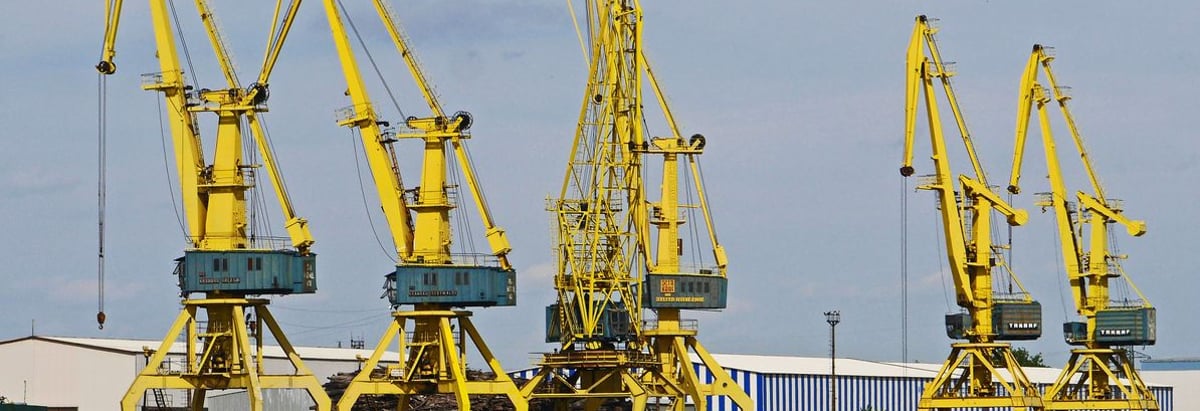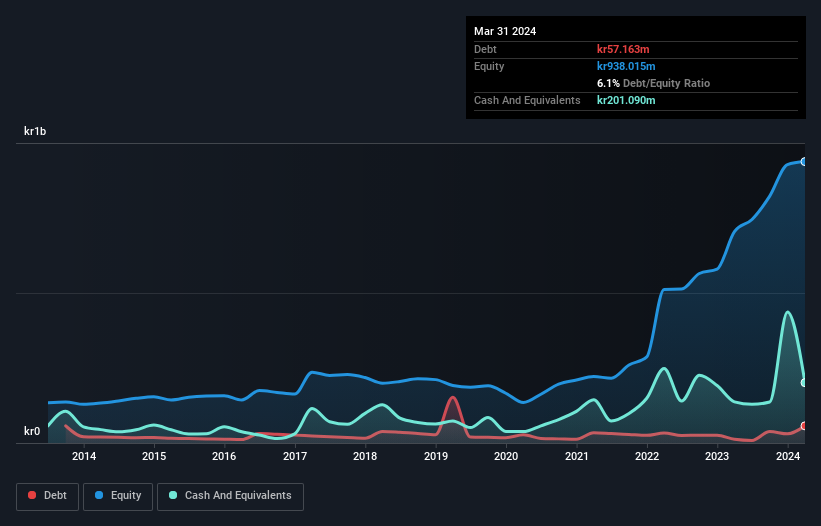
Howard Marks put it nicely when he said that, rather than worrying about share price volatility, 'The possibility of permanent loss is the risk I worry about... and every practical investor I know worries about.' When we think about how risky a company is, we always like to look at its use of debt, since debt overload can lead to ruin. Importantly, Reach Subsea ASA (OB:REACH) does carry debt. But the real question is whether this debt is making the company risky.
When Is Debt A Problem?
Generally speaking, debt only becomes a real problem when a company can't easily pay it off, either by raising capital or with its own cash flow. In the worst case scenario, a company can go bankrupt if it cannot pay its creditors. However, a more frequent (but still costly) occurrence is where a company must issue shares at bargain-basement prices, permanently diluting shareholders, just to shore up its balance sheet. Of course, plenty of companies use debt to fund growth, without any negative consequences. The first step when considering a company's debt levels is to consider its cash and debt together.
Check out our latest analysis for Reach Subsea
What Is Reach Subsea's Debt?
You can click the graphic below for the historical numbers, but it shows that as of March 2024 Reach Subsea had kr57.2m of debt, an increase on kr12.5m, over one year. However, it does have kr201.1m in cash offsetting this, leading to net cash of kr143.9m.

How Strong Is Reach Subsea's Balance Sheet?
The latest balance sheet data shows that Reach Subsea had liabilities of kr1.15b due within a year, and liabilities of kr1.10b falling due after that. Offsetting these obligations, it had cash of kr201.1m as well as receivables valued at kr654.7m due within 12 months. So it has liabilities totalling kr1.40b more than its cash and near-term receivables, combined.
This is a mountain of leverage relative to its market capitalization of kr2.15b. Should its lenders demand that it shore up the balance sheet, shareholders would likely face severe dilution. Despite its noteworthy liabilities, Reach Subsea boasts net cash, so it's fair to say it does not have a heavy debt load!
Notably, Reach Subsea's EBIT launched higher than Elon Musk, gaining a whopping 152% on last year. When analysing debt levels, the balance sheet is the obvious place to start. But ultimately the future profitability of the business will decide if Reach Subsea can strengthen its balance sheet over time. So if you want to see what the professionals think, you might find this free report on analyst profit forecasts to be interesting.
But our final consideration is also important, because a company cannot pay debt with paper profits; it needs cold hard cash. While Reach Subsea has net cash on its balance sheet, it's still worth taking a look at its ability to convert earnings before interest and tax (EBIT) to free cash flow, to help us understand how quickly it is building (or eroding) that cash balance. Happily for any shareholders, Reach Subsea actually produced more free cash flow than EBIT over the last three years. There's nothing better than incoming cash when it comes to staying in your lenders' good graces.
Summing Up
While Reach Subsea does have more liabilities than liquid assets, it also has net cash of kr143.9m. The cherry on top was that in converted 232% of that EBIT to free cash flow, bringing in kr654m. So we don't have any problem with Reach Subsea's use of debt. There's no doubt that we learn most about debt from the balance sheet. However, not all investment risk resides within the balance sheet - far from it. Be aware that Reach Subsea is showing 2 warning signs in our investment analysis , you should know about...
If, after all that, you're more interested in a fast growing company with a rock-solid balance sheet, then check out our list of net cash growth stocks without delay.
New: AI Stock Screener & Alerts
Our new AI Stock Screener scans the market every day to uncover opportunities.
• Dividend Powerhouses (3%+ Yield)
• Undervalued Small Caps with Insider Buying
• High growth Tech and AI Companies
Or build your own from over 50 metrics.
Have feedback on this article? Concerned about the content? Get in touch with us directly. Alternatively, email editorial-team (at) simplywallst.com.
This article by Simply Wall St is general in nature. We provide commentary based on historical data and analyst forecasts only using an unbiased methodology and our articles are not intended to be financial advice. It does not constitute a recommendation to buy or sell any stock, and does not take account of your objectives, or your financial situation. We aim to bring you long-term focused analysis driven by fundamental data. Note that our analysis may not factor in the latest price-sensitive company announcements or qualitative material. Simply Wall St has no position in any stocks mentioned.
Have feedback on this article? Concerned about the content? Get in touch with us directly. Alternatively, email editorial-team@simplywallst.com
About OB:REACH
High growth potential with excellent balance sheet.
Similar Companies
Market Insights
Community Narratives



